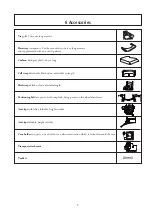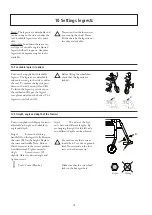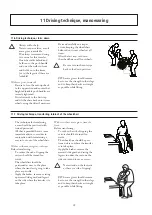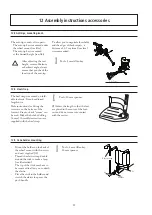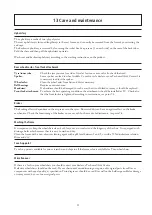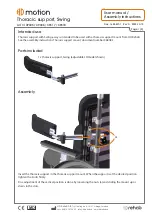
23
13 Care and maintenance
Upholstery
The upholstery is made of two-ply polyester.
The seat upholstery is fastened lengthways to the seat frame, and can easily be removed from the frame by unscrewing the
end caps.
The backrest upholstery is removed by loosening the socket head cap screws (1 on each side) on the rear of the back tubes.
Fold the chair and then pull the upholstery upwards.
Wash seat and backrest upholstery according to the washing instructions on the product.
Rear wheel/castor, front fork attachment
Tyre/inner tube:
Check the tyre pressure (see side of tyre) at least once a month, also check the tread.
Spokes:
Loose spokes can lead to wheel wobble. Consult a cycle dealer or your Technical Aids Centre if it
is necessary to adjust the spokes.
Wheel axles:
Clean the wheel axles from hair and dirt as necessary.
Ball bearings:
Require no maintenance.
Handrims:
If a handrim should be damaged in such a way that it could lead to injury, it should be replaced.
Front fork attachment: To achieve the best operating conditions, the attachments should be installed at 90°. Check also
that the front forks are tightened according to instructions, see point 7:4.
Brakes
The braking effect is dependent on the air pressure in the tyres. Encrusted dirt can have a negative effect on the brake
mechanism. Check the functioning of the brakes once a month. In the event of adjustments, see point 7:6.
Washing the frame
It is important to keep the wheelchair clean, both for your own comfort and the longevity of the chair. It is equipped with
drainage holes which ensures that it is easy to wash and dry.
Clean the frame with a non-abrasive cleaning agent with a pH level between 5 and 9, or with a 70% disinfectant solution.
Rinse and dry.
Touch-up paint
Touch-up paint is available for minor scratches and chips in all the frame colours available for Twin wheelchairs.
Miscellaneous
If there is a fault in your wheelchair you should contact your dealer or Technical Aids Centre.
Defective wheelchairs should not be used. If your chair needs reconditioning or repair, only original parts from Etac or
components with equal quality, as specified in Twin diagrams, should be used. Etac will not be held responsible for damage
or injury caused by use of non-original parts.

